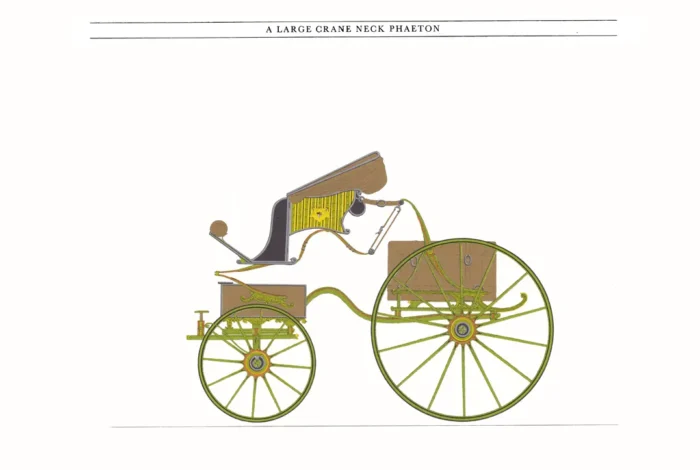Large Crane Neck Phaeton
£15.00
Large Crane Neck Phaeton (scroll down for a more detailed Description)
Published 1962 by © Hugh Evelyn Limited; drawn by Alan Osbahr
Size: c. 38 x 25.5 cm [14 ″ x 10 ″] – may vary slightly from printers’ cut 50 years ago
Printed on medium white cardstock weighing c. 140 g/sm2
Print is STANDARD size – shipping is the same for 1 to 10 prints (based on largest print size in your order) – see Shipping & Returns.
In stock
- Satisfaction Guaranteed
- No Hassle Refunds (see Shipping and returns)
- Secure Payments
Description
Summary
An open, four-wheeled, doorless carriage, popular in the 18th and 19th centuries. It contained one or two seats, usually had a folding, or falling, top, and was owner-driven (it had no outside driver’s seat). More reasonably constructed and graceful phaetons were the mail and the spider phaetons. The mail phaeton, used chiefly to convey passengers with luggage and as a traveling and posting carriage, was so named because it was constructed with mail springs originally designed for mail coaches. Double phaetons had two seats, and extension-top phaetons resembled better surreys and simpler cabriolets. There was also the heavier mail phaeton used chiefly to carry passengers with luggage and named for its construction, using “mail” springs originally designed for use on mail coaches. The spider phaeton, of American origin and made for gentlemen drivers, was a high and lightly constructed carriage with a covered seat in front and a footman’s seat behind. Fashionable phaetons used at horse shows included the Stanhope, typically having a high seat and closed back, and the Tilbury, a two-wheeled carriage with an elaborate spring suspension system, with or without a top. A variation of this type of a carriage is called a Victoria, with a retractable cover over the rear passenger compartment. Queen Elizabeth II each June from 1978 to 2011 during the official Queen’s Birthday celebrations, when she travelled to and from Trooping the Colour on Horse Guards Parade rode in an ivory-mounted phaeton carriage made in 1842 for her great-great-grandmother, Queen Victoria.
Additional information
| Dimensions | 38 × 25.5 cm |
|---|




